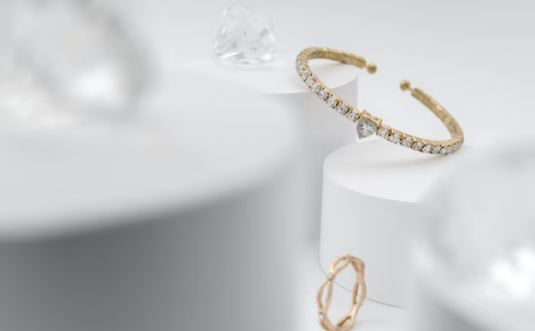In the fascinating world of fashion, numerous professionals contribute their unique expertise to bring creative concepts to life. Two such roles are fashion designer and technical designer. While their work may seem intertwined, there are distinct differences between these roles in terms of responsibilities, skill sets, and contributions to the fashion industry.
Understanding Fashion Design
Diving headfirst into the mesmerizing realm of fashion design, we find ourselves embarking on a journey filled with boundless creativity and imaginative prowess. This captivating field demands the artistry of conceptualization, the strokes of sketching, and the dexterity of transforming mere thoughts into alluring clothing ensembles and exquisite accessory masterpieces. At the heart of it all, fashion designers, the virtuosos of style, bear the weighty responsibility of birthing designs that are nothing short of extraordinary, capturing the zeitgeist of contemporary fashion trends while harmonizing with the ever-evolving whims of discerning consumers. Their discerning eyes dance upon the canvas of aesthetics, navigating through a tapestry of fabrics and materials, carefully handpicking the elements that breathe life into their visionary concepts, ultimately giving rise to tangible garments that transcend the ordinary and embrace the extraordinary.
Exploring Technical Design
Technical design, on the other hand, focuses on the practical aspects of fashion design. Technical designers bridge the gap between fashion designers and manufacturers by translating design concepts into precise technical specifications. They ensure that the designs are feasible for mass production and meet quality standards. Technical designers possess a deep understanding of garment construction, pattern making, and fitting techniques.
Responsibilities of a Fashion Designer
Fashion designers have a wide range of responsibilities that encompass the entire design process. Some of their key tasks include:
- Conducting market research to identify emerging trends and consumer demands;
- Creating design sketches and illustrations to visualize concepts;
- Selecting appropriate fabrics, trims, and embellishments for the designs;
- Collaborating with manufacturers and suppliers to source materials;
- Overseeing the garment production process to ensure quality and accuracy;
- Presenting the designs to clients, fashion buyers, or the public through fashion shows or presentations.
Skills Required for Fashion Designing
To excel as a fashion designer, one must possess a diverse skill set. These skills include:
- Creativity: Fashion designers must have a strong creative vision and the ability to think outside the box to create unique and visually appealing designs;
- Drawing and Illustration: Proficiency in sketching and illustrating designs is crucial for effectively communicating design concepts;
- Knowledge of Fabrics and Materials: A deep understanding of various fabrics, their properties, and their suitability for different garments is essential for making informed design choices;
- Color Theory: Fashion designers need a solid understanding of color combinations, palettes, and the psychology of colors to create harmonious and visually striking designs;
- Trend Awareness: Staying updated with the latest fashion trends and consumer preferences is essential for creating designs that resonate with the target audience;
- Technical Skills: While technical design is a separate role, fashion designers should have a basic understanding of garment construction, pattern making, and sewing techniques to communicate effectively with technical designers and manufacturers.
Roles and Responsibilities of a Technical Designer
Technical designers play a critical role in ensuring the feasibility and quality of fashion designs. Some of their key responsibilities include:
- Developing technical specifications, such as measurements, patterns, and construction details, based on fashion designer’s concepts;
- Collaborating with fashion designers to understand their design intent and provide technical expertise;
- Creating detailed tech packs or design packages that include all necessary information for manufacturers to produce the garments accurately;
- Conducting fittings and making necessary adjustments to ensure proper garment fit and proportions;
- Collaborating with manufacturers and pattern makers to resolve any production-related issues;
- Conducting quality control checks to ensure that the finished garments meet the desired standards.
Essential Skills for Technical Designing
Technical designers require a specific skill set to carry out their responsibilities effectively. These skills include:
- Pattern making: Proficiency in pattern making is crucial for creating accurate patterns that align with the fashion designer’s vision and desired garment fit;
- Garment Construction: In-depth knowledge of garment construction techniques allows technical designers to identify potential issues in the manufacturing process and suggest appropriate solutions;
- Attention to Detail: Technical designers must have a keen eye for detail to identify any discrepancies or inconsistencies in patterns, measurements, or construction that could affect the final product;
- Problem-Solving: Technical designers need excellent problem-solving skills to troubleshoot issues that may arise during the production process and find practical solutions.
- Communication: Effective communication is key for technical designers to collaborate with fashion designers, manufacturers, and pattern makers, ensuring that all parties are on the same page.

Collaboration between Fashion Designers and Technical Designers
Fashion designers and technical designers often work hand in hand to bring a design from concept to reality. Their collaboration involves:
- Regular communication and exchange of ideas to ensure a shared understanding of the design vision;
- Fashion designers providing creative direction and conceptual sketches to technical designers;
- Technical designers translating the design concepts into detailed technical specifications;
- Fashion designers and technical designers conducting fittings together to refine the garment’s fit and proportions;
- Continuous collaboration throughout the production process to address any design or production-related challenges.
Comparison Table: Fashion Designer vs. Technical Designer
Here’s a comparison table highlighting the key differences between fashion designers and technical designers:
| Fashion Designer | Technical Designer |
|---|---|
| Focuses on creative aspects of fashion design | Focuses on technical aspects of fashion design |
| Responsible for visualizing and creating designs | Translates designs into technical specifications |
| Conducts market research and trend analysis | Collaborateswith fashion designers to understand design intent and provide technical expertise |
| Selects fabrics, trims, and embellishments | Develops technical specifications and creates detailed tech packs |
| Presents designs through fashion shows or presentations | Conducts fittings and ensures proper garment fit and proportions |
| Collaborates with manufacturers and suppliers | Collaborates with manufacturers and patternmakers to resolve issues |
Understanding the Fashion Design Process
The fashion design process involves several stages that fashion designers follow to bring their creative ideas to life. These stages typically include:
- Inspiration and Research: Fashion designers gather inspiration from various sources such as art, nature, cultures, or historical periods. They conduct research to understand current fashion trends, consumer preferences, and market demands;
- Sketching and Concept Development: Fashion designers translate their ideas into rough sketches and illustrations. They explore different silhouettes, color palettes, and design elements to refine their concepts;
- Fabric and Material Selection: Based on the design concept, fashion designers choose suitable fabrics, trims, and embellishments that align with their vision. They consider factors such as texture, drape, and sustainability;
- Pattern making and Draping: Fashion designers create patterns or drape fabrics directly on dress forms to bring their designs to life in three dimensions. This step helps them visualize the garment’s shape, fit, and proportions;
- Sample Creation and Fittings: Fashion designers work with skilled pattern makers and sewers to produce prototypes or samples of their designs. They conduct fittings on models to evaluate the garment’s fit, make adjustments, and refine the design;
- Finalizing and Production: After multiple rounds of fittings and refinements, fashion designers finalize the design and collaborate with manufacturers to produce the garments at a larger scale. They provide technical specifications and oversee the production process to ensure quality and consistency.

Key Differences in Education and Training
Education and training requirements for fashion designers and technical designers differ based on their distinct roles. Typically, fashion designers pursue formal education in fashion design, which includes:
- Bachelor’s degree in fashion design or a related field;
- Coursework in design principles, fashion illustration, textiles, pattern making, and garment construction;
- Hands-on experience through internships, design projects, and fashion shows.
Technical designers, on the other hand, may follow different educational paths, including:
- Bachelor’s degree in fashion design or a related field with a specialization in technical design;
- Certificate programs or vocational training in technical design or pattern making;
- Proficiency in computer-aided design (CAD) software used in the fashion industry;
- Hands-on experience working with manufacturers or in technical design roles.
While fashion designers focus more on creativity and design aesthetics, technical designers require in-depth knowledge of garment construction, pattern making, and technical specifications.
Conclusion
In conclusion, while fashion designers and technical designers share a common passion for fashion, their roles and responsibilities within the industry differ significantly. Fashion designers focus on creative design aspects, conceptualizing and visualizing fashion trends, while technical designers bridge the gap between design and production, ensuring the feasibility and quality of garments. Both roles require distinct skill sets and play vital roles in the fashion industry’s collaborative process.




